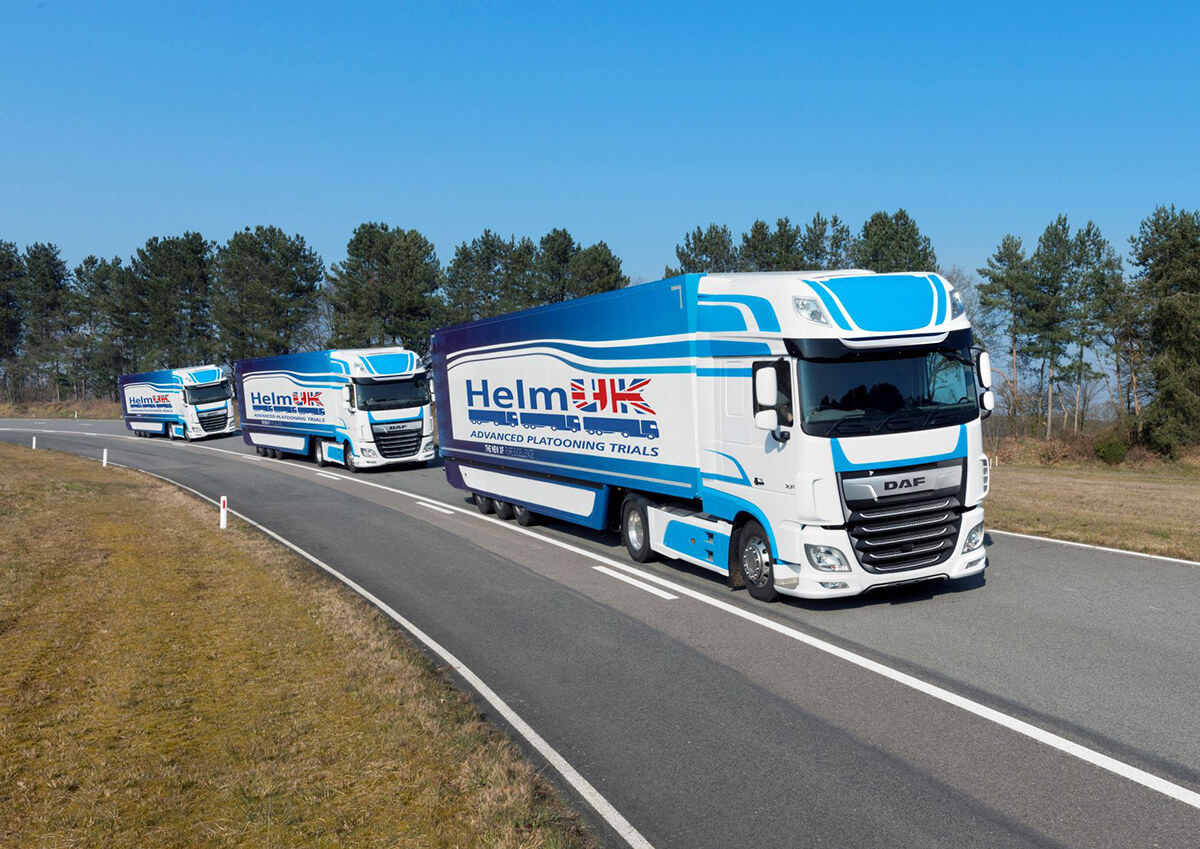VISIONTRACK PROVIDES VIDEO TELEMATICS EXPERTISE TO UK’S HGV PLATOONING TRIAL
Written by VisionTrack
24 October 2019
VisionTrack is providing advanced video telematics technology for a fleet of commercial vehicles being used as part of truck platooning trials taking place within the UK. The company has joined a consortium of partners, led by Transport Research Laboratory (TRL), that is conducting the tests on behalf of Highways England and the Department for Transport.
“We are delighted that our video telematics technology is playing an important role in these trials,” explains Simon Marsh, Managing Director of VisionTrack. “We are supporting the consortium to implement a connected vehicle camera solution that will help establish whether platooning can be allowed to take place on UK roads safely.”
A five-camera solution, using a connected digital video recorder (DVR), has been installed to provide complete visibility of the tractor units and trailers as they go through the various phases of testing. Front, rear and driver facing cameras, along with side cameras, will capture video and supporting data regarding what is going on in and around the vehicles, especially interactions with other road users. In combination with the use of advanced driver-assistance systems (ADAS) technology, the solution will also assess the impact on the workload of the driver while platooning compared to normal operating conditions.
Camilla Fowler, Head of Risk Management at TRL commented: “We have brought together a consortium of partners that delivers a powerful combination of vehicle system innovation, operational experience, robust trial design, coupled with a proven understanding of road safety issues. VisionTrack is a leading video telematics specialist that is providing the trial with a vehicle camera and monitoring solution. This will enable us to record and measure activity that may be classified as a risk, which will help us understand and quantify the road safety issues of platooning.”
Truck platooning is the process of synchronising control, using connected technology, so a number of HGVs can travel in close formation with acceleration and braking controlled by the lead vehicle. The drivers remain in control of lateral vehicle movement at all times, keeping their hands on the wheel. These trials aim to quantify the potential fuel efficiency benefit associated with the slipstreaming effect which occurs when the distance between commercial vehicles is fixed.





